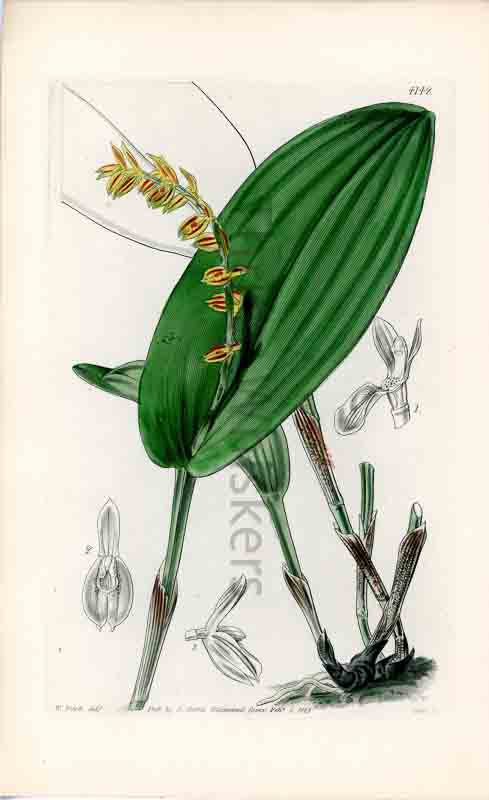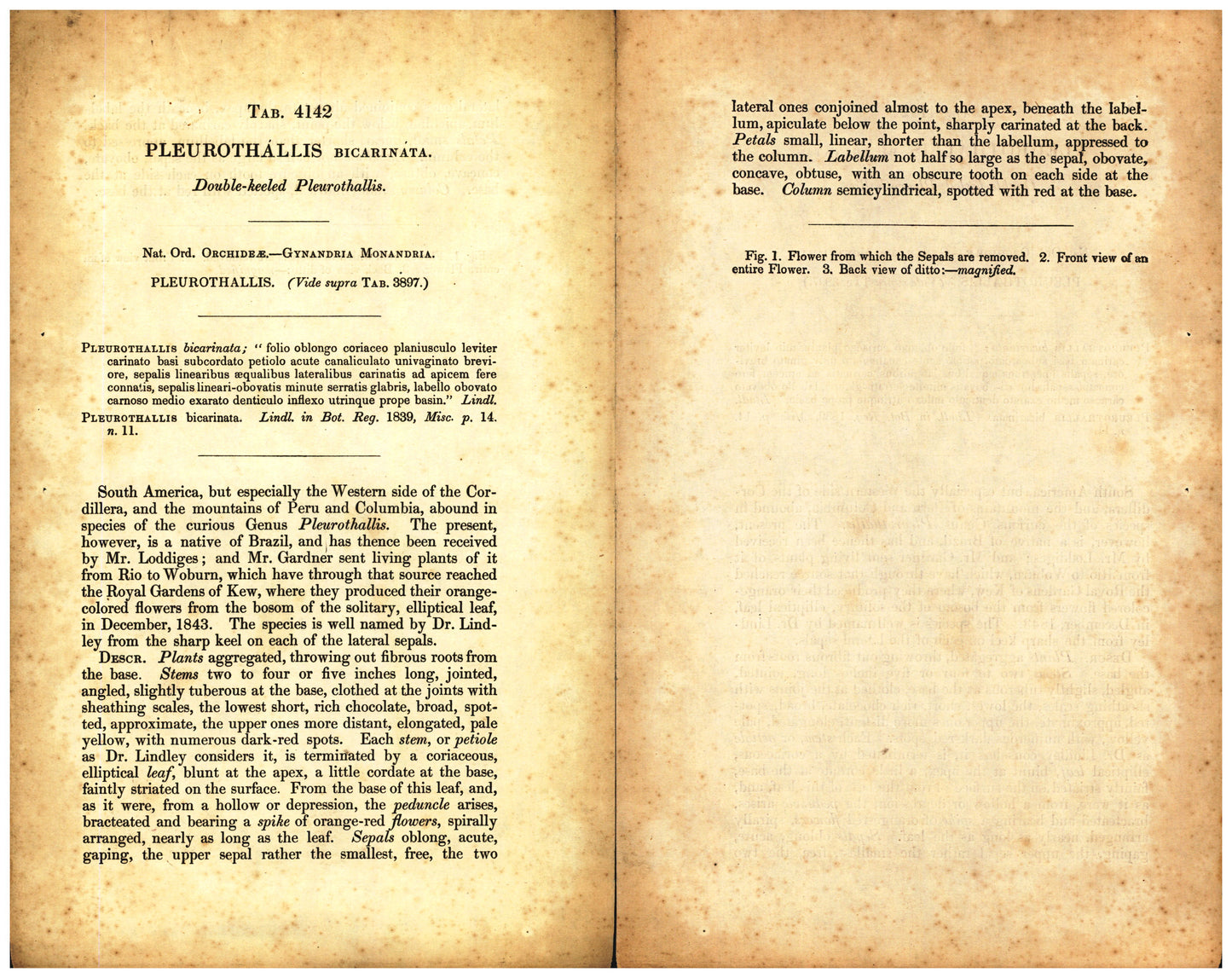Thrifty Whiskers
Plate 4142 Hand-Colored Botanical Print - Digital Download
Plate 4142 Hand-Colored Botanical Print - Digital Download
Couldn't load pickup availability
This is a high-resolution digital download of Plate 4142 from Curtis's Botanical Magazine. The original illustration was hand-colored in the 1800s. This listing includes both the botanical image and its accompanying description tab.
Perfect for art collectors, interior decor, or historical enthusiasts. No physical item will be shipped.
Malad odt
TAB. 4142 PLEUROTHÁLLIS BICARINATA.
Double-keeled Pleurothallis. lateral ones conjoined almost to the apex, beneath the label- lum, apiculate below the point, sharply carinated at the back. Petals small, linear, shorter than the labellum, appressed to the column. Labellum not half so large as the sepal, obovate, concave, obtuse, with an obscure tooth on each side at the base. Column semicylindrical, spotted with red at the base.
Figures
Fig. 1. Flower from which the Sepals are removed. 2. Front view of an entire Flower. 3. Back view of ditto:-magnified. Nat. Ord. ORCHIDEE.-GYNANDRIA MONANDRIA. PLEUROTHALLIS. (Vide supra TAB. 3897.) PLEUROTHALLIS bicarinata; "folio oblongo coriaceo planiusculo leviter carinato basi subcordato petiolo acute canaliculato univaginato brevi- ore, sepalis linearibus æqualibus lateralibus carinatis ad apicem fere connatis, sepalis lineari-obovatis minute serratis glabris, labello obovato carnoso medio exarato denticulo inflexo utrinque prope basin." Lindl. PLEUROTHALLIS bicarinata. Lindl. in Bot. Reg. 1839, Misc. p. 14. n. 11. The present, South America, but especially the Western side of the Cor- dillera, and the mountains of Peru and Columbia, abound in species of the curious Genus Pleurothallis. however, is a native of Brazil, and has thence been received by Mr. Loddiges; and Mr. Gardner sent living plants of it from Rio to Woburn, which have through that source reached the Royal Gardens of Kew, where they produced their orange- colored flowers from the bosom of the solitary, elliptical leaf, in December, 1843. The species is well named by Dr. Lind- ley from the sharp keel on each of the lateral sepals.
Botanical Description Plants aggregated, throwing out fibrous roots from
the base. Stems two to four or five inches long, jointed, angled, slightly tuberous at the base, clothed at the joints with sheathing scales, the lowest short, rich chocolate, broad, spot- ted, approximate, the upper ones more distant, elongated, pale yellow, with numerous dark-red spots. Each stem, or petiole as Dr. Lindley considers it, is terminated by a coriaceous, elliptical leaf, blunt at the apex, a little cordate at the base, faintly striated on the surface. From the base of this leaf, and, as it were, from a hollow or depression, the peduncle arises, bracteated and bearing a spike of orange-red flowers, spirally arranged, nearly as long as the leaf. Sepals oblong, acute, gaping, the upper sepal rather the smallest, free, the two Thrifty Whiskers Telivi bevisasi шой ond or 10. ised to ovih bm layoff si ॐ Jou road adi most aorat Banlo lo d God quada adi moal yol tigerges An
Share





